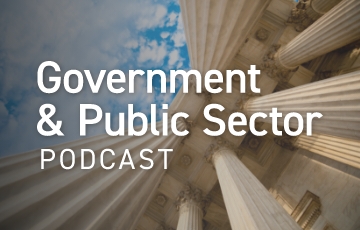New OMB Guidance for Federal Assistance (formerly known as the OMB Guidance for Grants and Agreements) was released on April 12, 2024. Still in pre-publication form, however, the effective date of the new rule is expected to take effect on October 1, 2024.
As part of the process, OMB welcomed more than 829 public comments from a various stakeholders, including States, local governments, Indian Tribes, labor organizations, industry associations, nonprofit organizations, for-profit organizations, colleges, universities and individuals.
This update is meant to improve Federal financial assistance management, transparency, and oversight through more accessible and easily understandable guidance. The OMB identified four focus areas during their proposed changes:
- Incorporating statutory requirements and administration priorities
- Reducing agency and recipient burden
- Clarifying sections that recipients or agencies have interpreted in different ways
- Rewriting applicable sections in plain language, improving flow, and addressing inconsistent use of terms within the guidance
Proposed Changes
Some of the most impactful proposed changes include the following:
- New terminology, “Federal Financial Assistance,” replaces what was previously referred to as “Grants and Agreements”
- The single audit requirement threshold is raised from $750,000 to $1,000,000
- The director of the OMB is authorized to adjust this dollar amount every two years, consistent with the purpose of the Single Audit Act (but never below $300,000)
- The Type A Program threshold is raised:
- From $750,000 to $1,000,000 when federal expenditures are at or below $34,000,000
- When total federal expenditures are more than $34,000,000, the threshold will continue to increase progressively, similar to previous guidance
- The equipment threshold determination is raised from $5,000 to $10,000
- The terminology, “beneficiary,” will not be defined, and the definition of this term will be left to individual federal agencies on a grant-by-grant basis
- The prohibition of geographic preference is removed from procurement standards
- Recipients or subrecipients of micro-purchase awards must maintain documentation to support why they consider the price reasonable based on research, experience, purchase history or other information
- While not new, recipients and subrecipients can increase their micro-purchase threshold up to $50,000 with proper documentation and justifications as to why that level is appropriate for the organization (i.e., considered a low-risk auditee, annual risk assessment performed to identify, mitigate, and manage financial risks, and the higher threshold is consistent with State Law)
- Prior written approvals from section 200.407 include the removal of ten (10) items from requirements to reduce Federal agency and recipient burdens
- De minimis indirect cost rate increases from 10% to 15%
Your Guide Forward
Cherry Bekaert’s Government & Public Sector team of dedicated professionals offers unique insight and guidance to help state and local government entities and not-for-profit organizations navigate the ever-changing regulatory environment, optimize operations, and achieve their mission objectives. If we can help you prepare for future developments such as OMB Guidance for Federal Assistance, contact us today.




